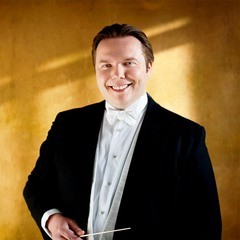|
Back
Classical Arrangements New York
Italian Academy of Columbia University
10/05/2016 -
Wolfgang Amadeus Mozart: From 6 Preludes and Fugues for String Trio, K.404a: Prelude No.1 in D minor and Fugue No.1 in D minor(after J.S. Bach Fugue in D-sharp minor from the Well Tempered Clavier, BVW 853 – Piano Quartet in e-flat, K. 493
Johann Sebastian Bach (arr. Dmitry Sitkovetsky): Fifteen Sinfonias for String Trio, BVW787-801
Dmitry Sitkovetsky (Violin), Dov Scheindlin (Viola), Sergey Antonov (Cello), Ignat Solzhenitsyn (Piano) 
I. Solzhenitsyn (© Courtesy of the Artist)
“Music in Context,” a popular series in Europe, which is presented under the aegis of the ASPECT Foundation for Music & Arts, founded by Irina Knaster, has now moved to New York City to the highly attractive Italian Academy at Columbia University. ASPECT Foundation’s goal is to present traditional classical music performances which incorporate a variety of art forms and discussions so as to lend a greater understanding of the social and historical context behind a piece of music.
The inaugural concert of the 2016-2017 New York season could not have been more felicitous, featuring a group of stellar musicians at the height of their profession. The beautifully appointed venue, with its large ballroom, Renaissance style ceiling, and small proscenium stage, has excellent acoustics: an ideal space for chamber music. Except for the violist, all of the soloists are of Russian descent; Dmitry is the son of the illustrious Julian Sitkovetsky, who died of cancer at an early age in 1958 and, who, along with Oistrakh and Kogan, is considered to be one of the best Soviet violin virtuosos. Dmitry’s mother, Chopin Competition winner Bella Davidovich, (who was in attendance at the concert) is also known as one of the Soviet Union’s most famous pianists. Ignat’s father, writer Alexander Solzhenitsyn, I suppose needs no introduction. The cellist, Mr. Antonov, is a Tchaikovsky Competition winner.
The first half of the concert featured Mozart and Sitkovetsky arrangements of works by Bach for string trio; the second half consisted of Mozart’s Piano Quartet in E-flat. K.493. Musicologist Paul Berry of Yale University, who introduced the program, made a point of acquainting the audience with an interesting, little-known link between Bach and Mozart. The person partially responsible for this link was a certain Baron Gottfried van Swieten, a diplomat and minor composer, who undoubtedly had a lasting influence on Mozart. He was also a dedicated collector of Bach and Handel scores, composers nearly forgotten in Mozart’s time. It was in his house that Mozart became acquainted with the works of Bach which, on Sunday matinees, he and others, played in arrangement for strings, and it may have also been here that Mozart transcribed some fugues by Bach, preceding them with preludes of his own composition.
We were treated to a performance of the entire set of the Bach 15 Sinfonias, also known as Three-Part Inventions, transcribed by Mr. Sitkovetsky for string trio. Some decades ago Mr. Sitkovetsky achieved great success with his transcriptions of the Bach Goldberg Variations. The Sinfonias, which nowadays are frequently performed, were not any less attractive. These short keyboard pieces that Bach intended to be used mainly as teaching exercises are sometimes played in public by concert pianists, but it takes a master to turn them into true recital material. I found the trio arrangement much more convincing as it allowed each voice to be clearly delineated and permitted a range of articulation and a variety of timbres, something neither the piano nor harpsichord can easily match. I believe, however, it might make sense for variety’s sake to intersperse some of Mozart’s fugues with the Bach sinfonias.
The performances were exemplary: each of the players is a virtuoso in his own right, each shone on his instrument, and all difficulties presented by the score melted away. Intonation was flawless and the timbre of each instrument blended beautifully. A very impressive presentation indeed.
The Mozart Piano Quartet was, if anything, even more successful, primarily because of Solzhenitsyn’s presence. He is not as well known to the American public as some of his peers, though in my opinion he outstrips many of them. Each time I hear him at one of his infrequent New York performances, he strengthens my belief that this versatile musician is one of the most important artists of our day. Like Sitkovetsky, he is also an admired conductor.
What made Solzhenitsyn’s playing of this difficult piano part truly exceptional was his consummate timing from the very first notes, his crystal clear articulation, and his beautiful tone. Most important, however, was his adherence to the idea that Mozart scales and fast runs should be played as melody, allowing each note to speak. In so doing, he brought to mind the best interpreters of Mozart such as Lupu, Schiff, and the late Polish pianist Artur Balsam. I urge my readers to keep his name—already famous—foremost in their minds. Piano playing doesn’t come much better; perhaps faster and louder, but not better.
Mr. Berry’s comments on music, aided by both musical and visual examples, were very much to my liking. It should be noted that the program notes by Stephen Johnson were no less informative and impressive.
It was thus an auspicious beginning for an interesting series, featuring superb performers.
Roman Markowicz
|